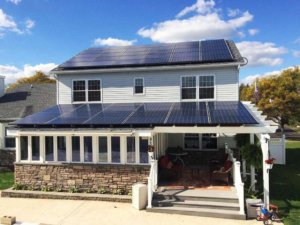 As technology becomes more advanced, solar panels using photovoltaic cells to absorb sunlight and create electricity are becoming more affordable, portable and efficient. They are readily available in various sizes to serve a range of needs. Smaller self-powered units are now very common – think of wireless patio lights with solar panels on their tops.
As technology becomes more advanced, solar panels using photovoltaic cells to absorb sunlight and create electricity are becoming more affordable, portable and efficient. They are readily available in various sizes to serve a range of needs. Smaller self-powered units are now very common – think of wireless patio lights with solar panels on their tops.
But other types are also gaining wider use. For example, you can buy flexible solar panels small enough to roll up and carry on a backpack, and then roll out to capture sunlight for powering a computer or smartphone while camping, hiking or boating.
On a larger scale, any rooftop, balcony or yard with reasonably consistent exposure to direct sunlight, might be a potential site for a solar panel that provides free energy for home use.
Such installations, of course, would require further investigation, as the upfront costs can be quite high. To begin, check your current electricity bill to see how much you consume in order to determine the size of panels you would need. Next, speak to an expert to find out if your exposure gets enough sunlight to generate sufficient electricity to be worthwhile – a quick search on google will help you find one in your area. Finally, find manufacturers and installers and look for government agencies that may provide discounts, rebates or credits for the electricity you generate.
